In April 2025, Larian Studios released Patch 8 for Baldur’s Gate 3.
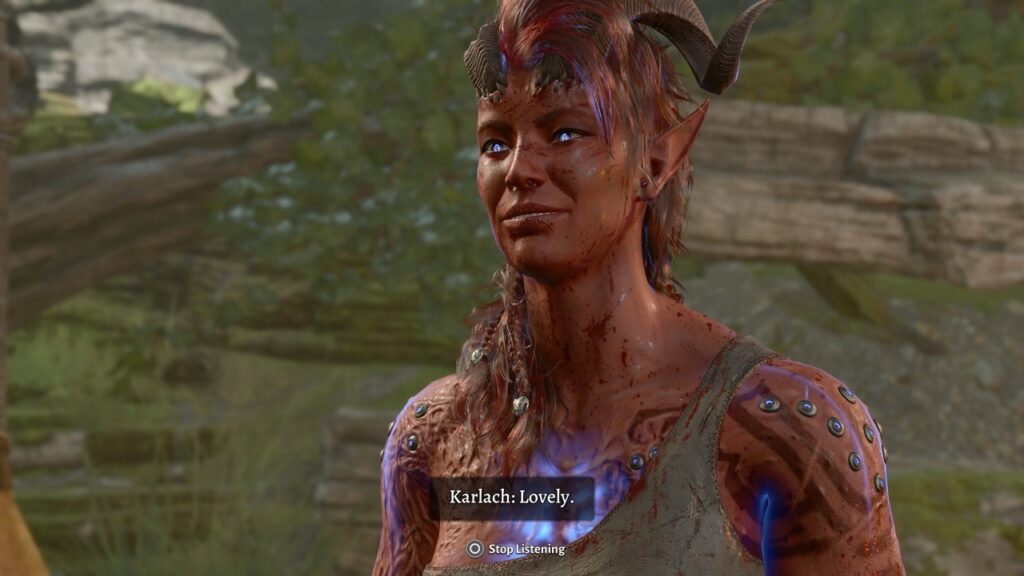
The two biggest changes introduced by the patch were:
-
Cross-play – This means that it was now possible to have multi-player games in which some gamers were on desktop computers and others were on consoles. Previously, multi-player games were restricted to just one of those communities. I’ll go over this in my write-up of playthough 1/14.
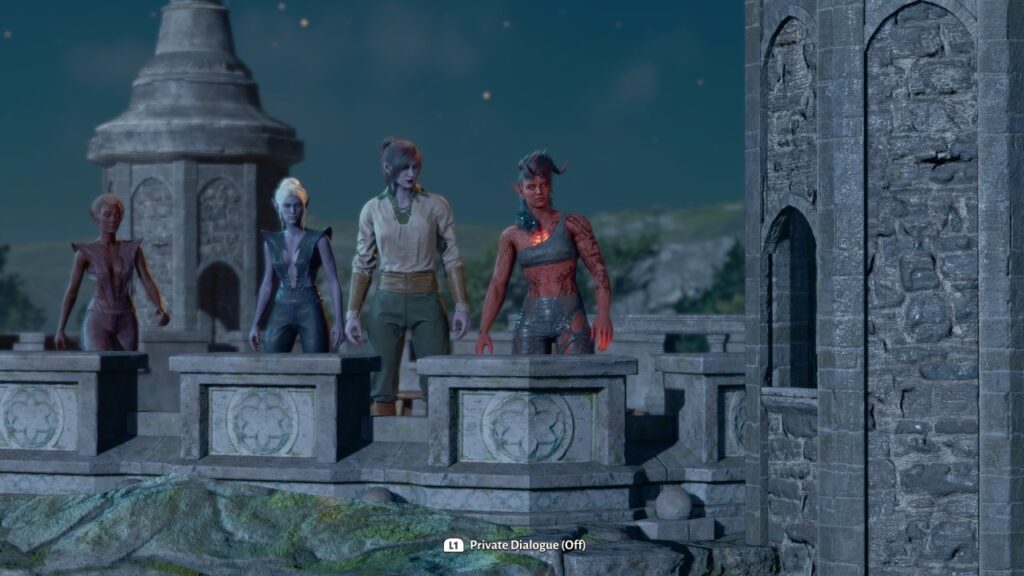
From playthrough 1/14, which (as I write this) I’ve not yet written up. - Photo mode – The subject of this post.
Photo mode allows you to interrupt the game in mid-play to take pictures. This is not just taking screenshots; that’s always been available, subject to the screen-capture capabilities of your platform:
-
On a PS5, I could capture any game’s screen by holding down the SELECT button on the controller for about a second.
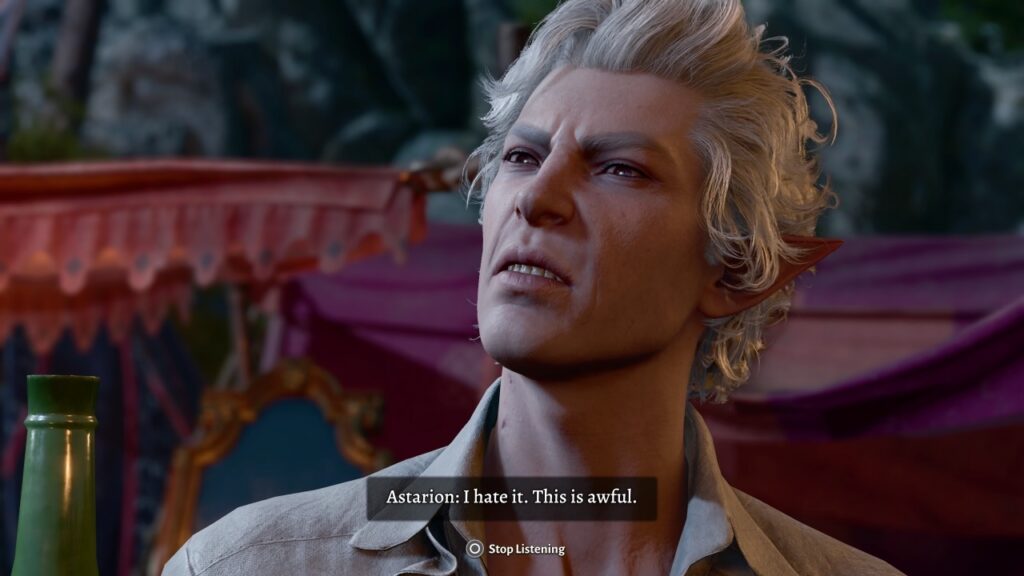
Astarion’s opinions are not mine. I prefer to take screenshots this way. -
In my Mac, I could use the Mac OS feature of pressing CMD-SHIFT-3 to capture the screen. Later, I found it more convenient to use Steam’s screen-capture feature of simply hitting F12.
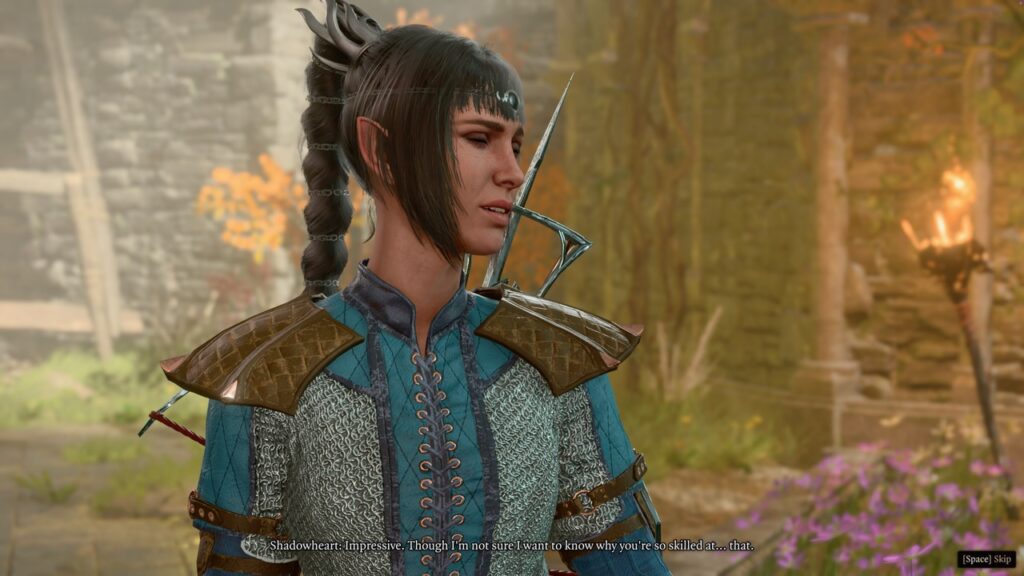
A screenshot I captured while playing on my Mac. Note how the caption text is smaller than what I used on the console; I sit closer to my computer’s screen than I do to my TV, so I could make out the smaller letters.
This is how I took my thousands of photos from which I select the images used in my BG3 series. A reminder: The reason why I take so many screenshots for this blog is that, based on limited feedback and my capacity for self-delusion, I believe it makes my blog posts easier for readers to absorb if my text is interspersed with lots of pictures.
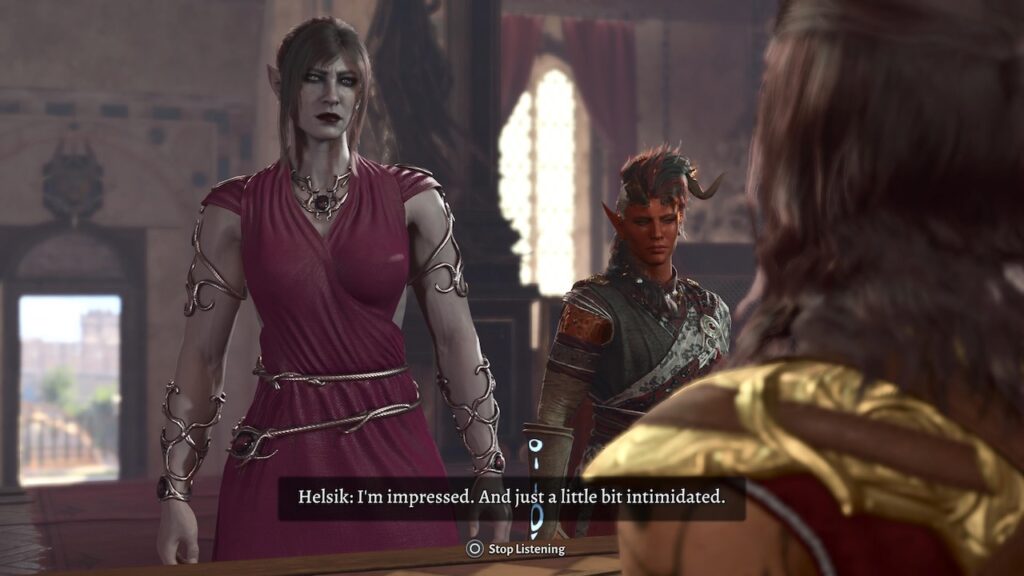
The new BG3 photo mode is not intended for screen capture. It’s designed for players to interrupt their game in order to set up a diorama of the characters in an environment.
The player can re-arrange the position, angle, posture, and facial expressions of the characters, add various camera tweaks and graphics effects, with the goal of composing images.
I fiddled with this. Note all the following photo-mode images were made by restoring old playthrough saves; they were not taken in the course of what I think of as a “regular” playthrough.
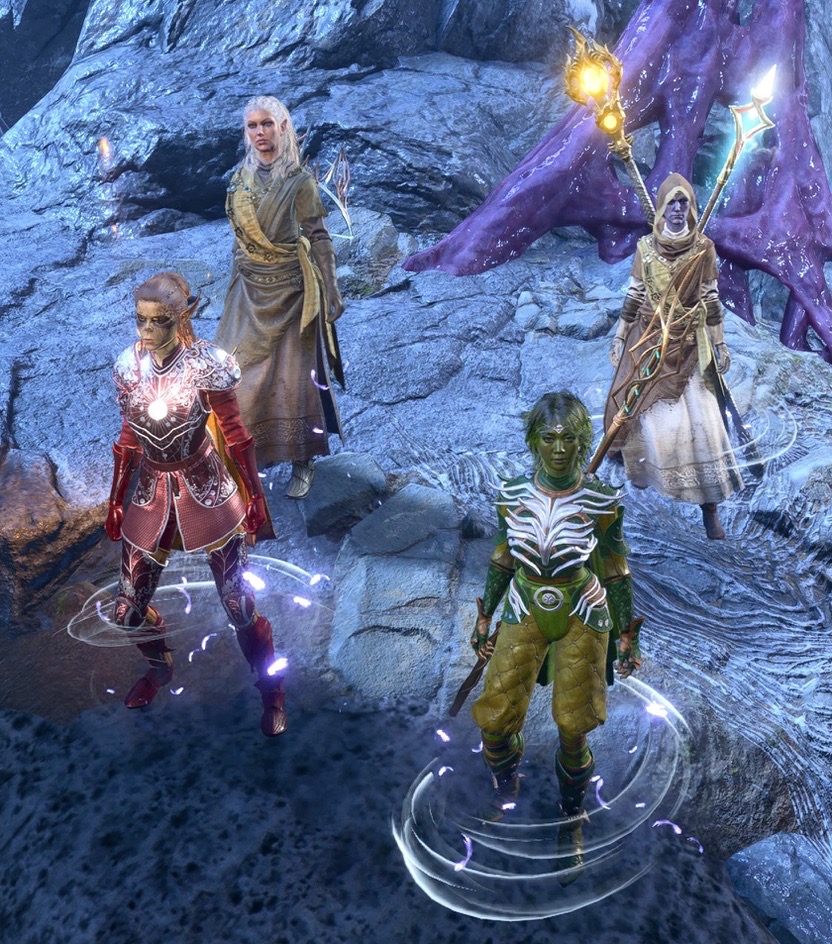
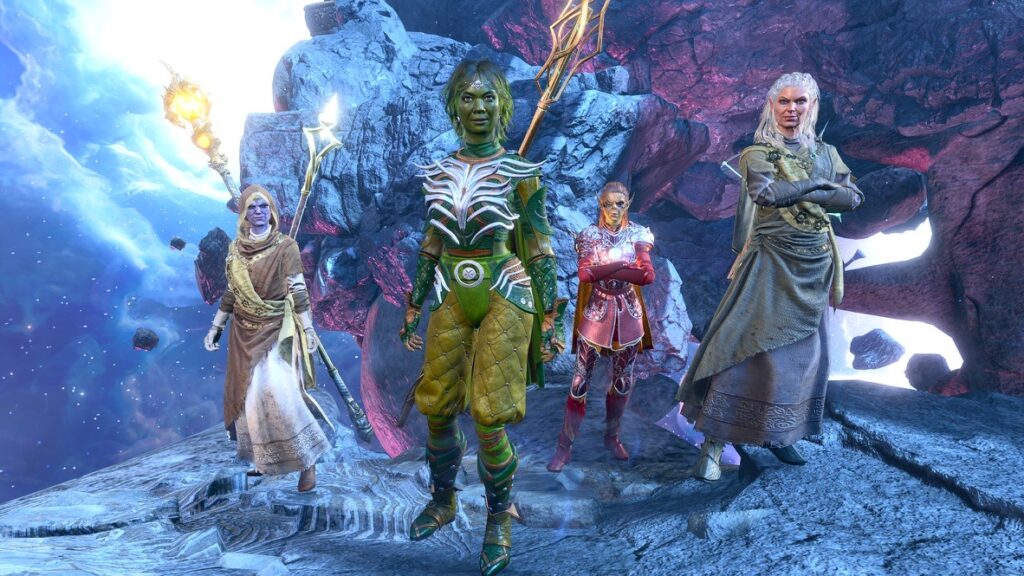
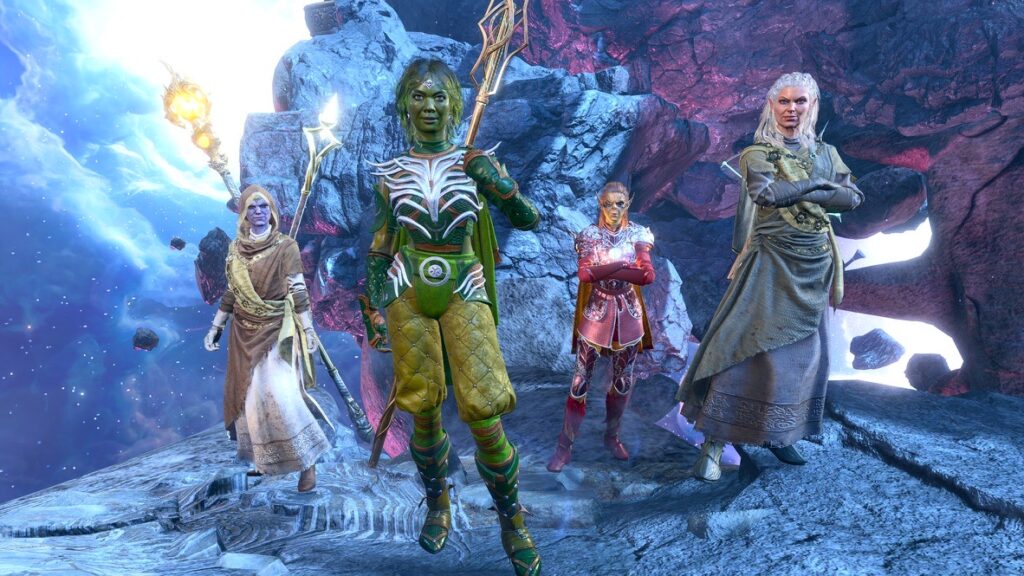
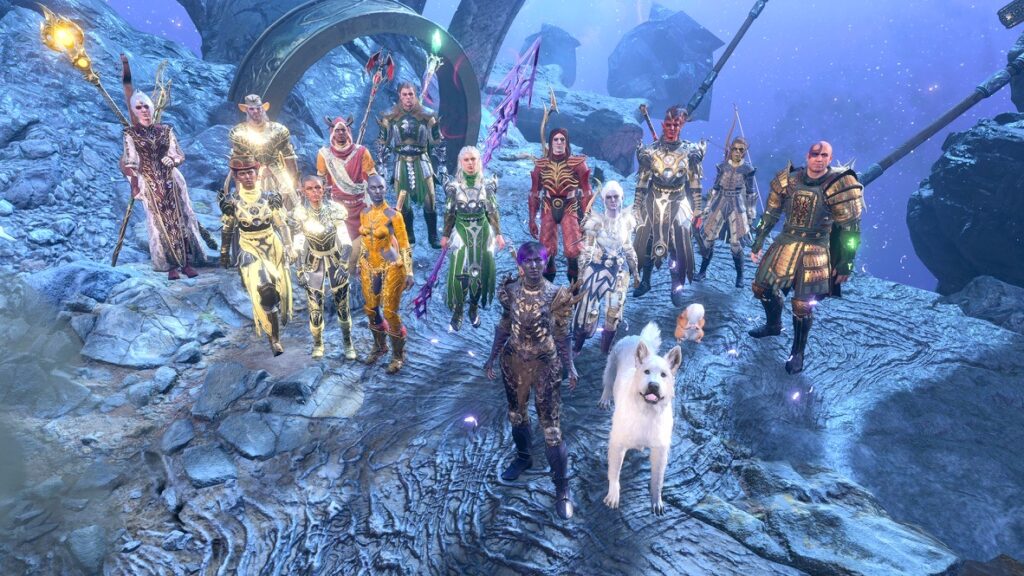
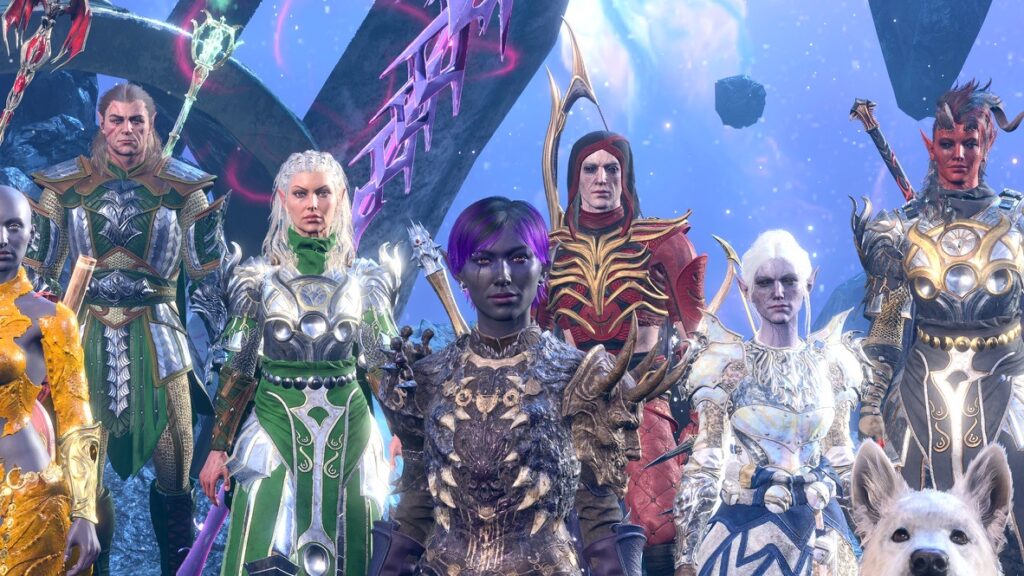
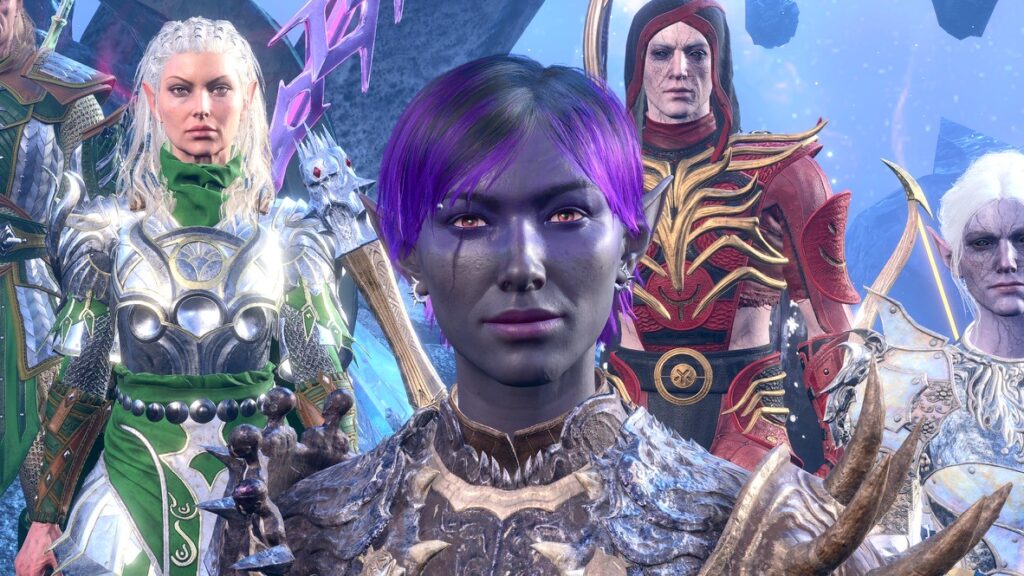
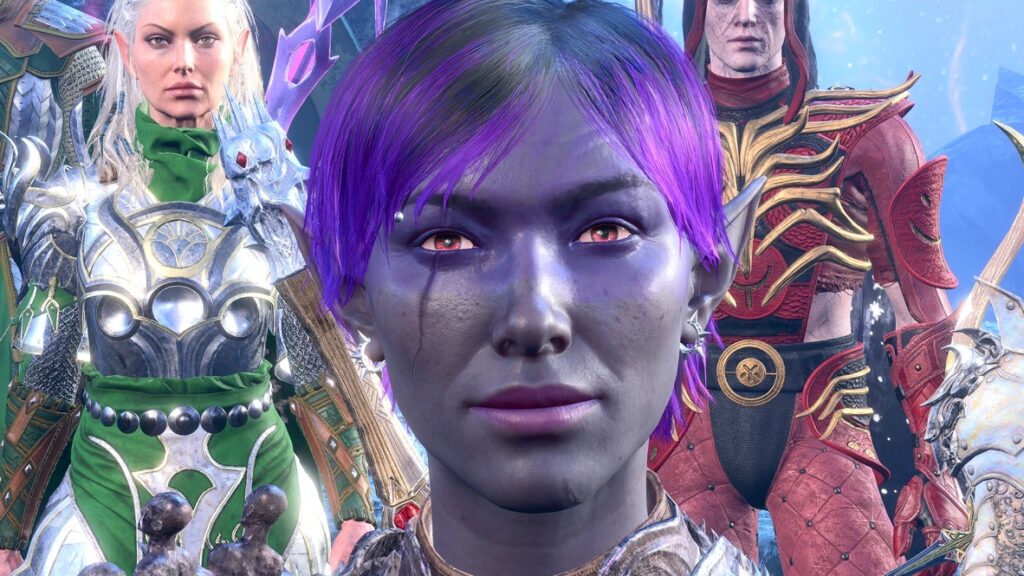
Essentially, it turns the character figures in the game into digital puppets. I actually felt a bit uncomfortable with this, though of course it’s all in my head. Characters like Shadowheart and Karlach always were digital puppets. Photo mode strips the illusion of humanity away.
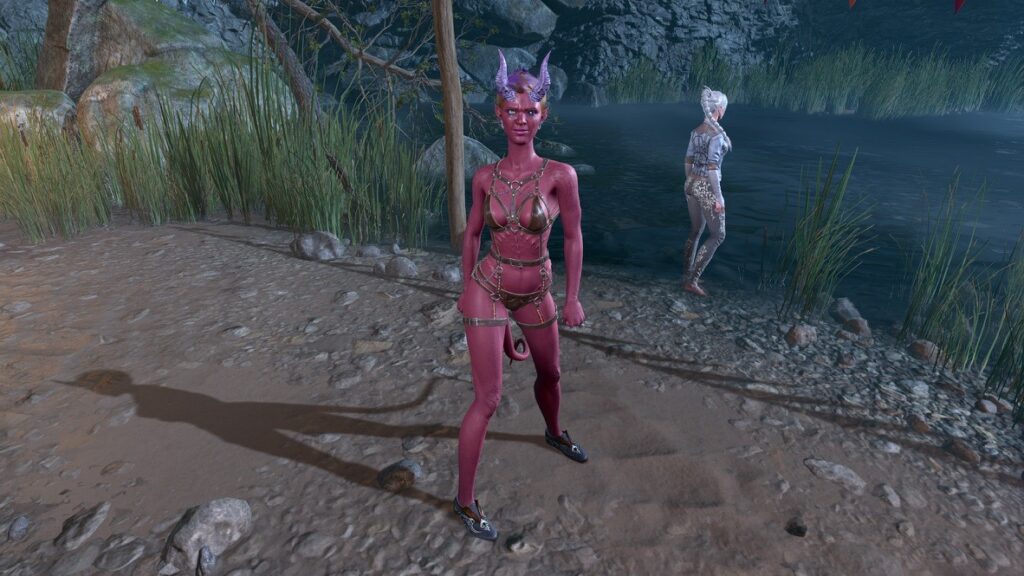
What will this be used for? The obvious answer is porn. I’ve already briefly shown how you can strip down the character models if you choose. Although Larian Studios may not have intended photo mode for this purpose, I’m sure those were the first scenes set up by the BG3 player community once the mode was released.
Although digital porn of digital characters assuming digital positions has little interest for me, my inner teenager couldn’t help but fiddle around with images of the Swedish Bikini Team from playthrough 3.
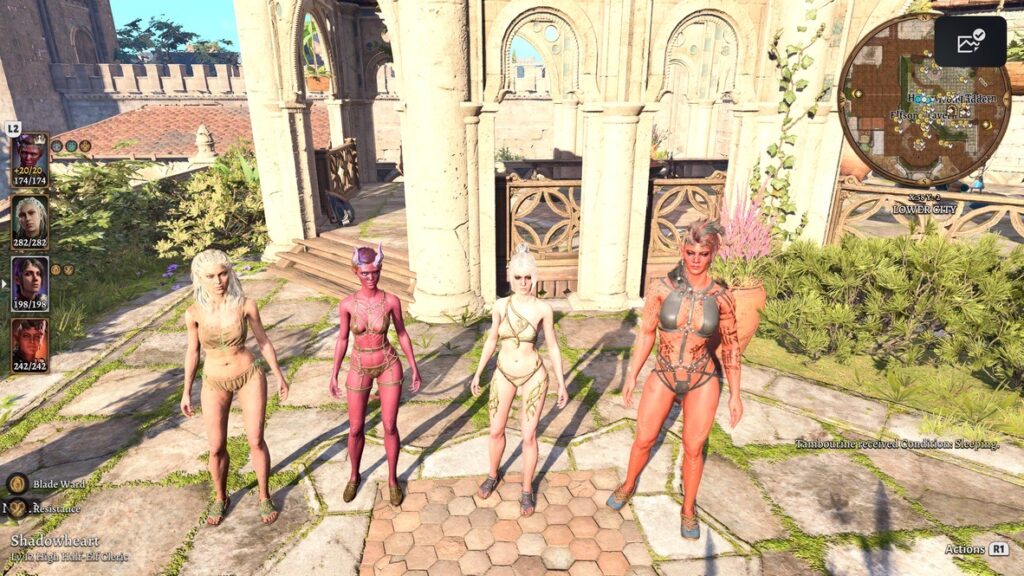
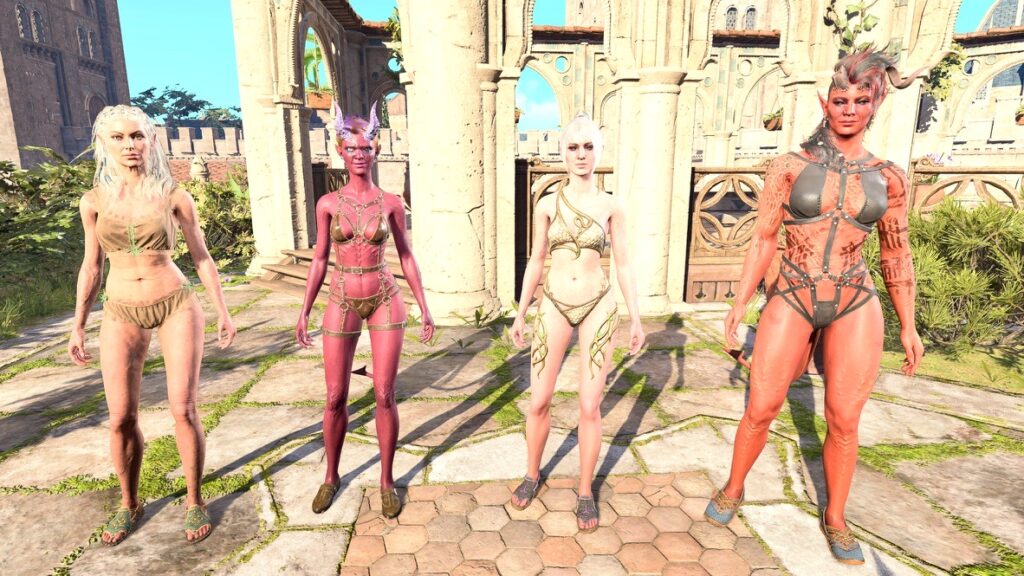
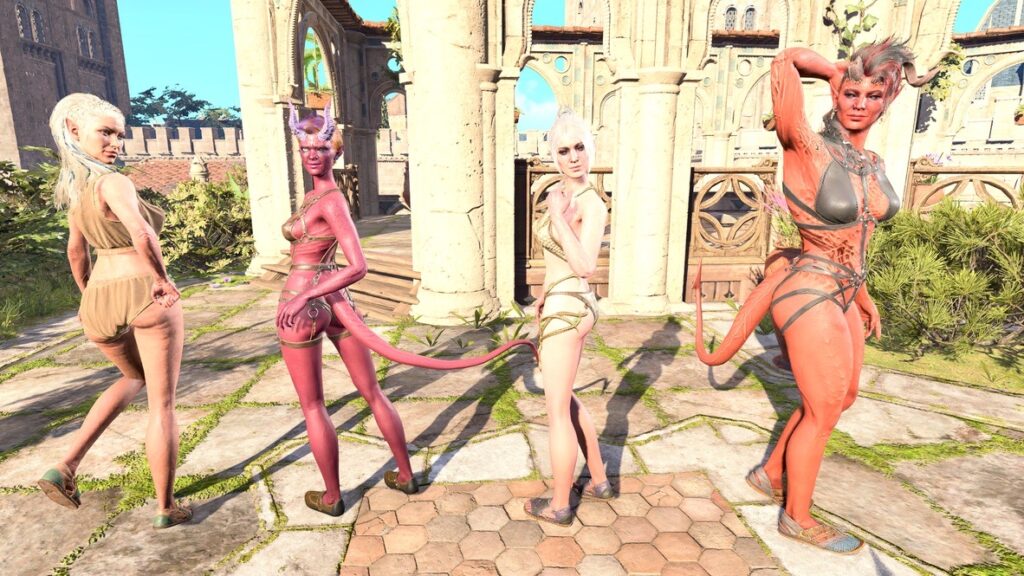
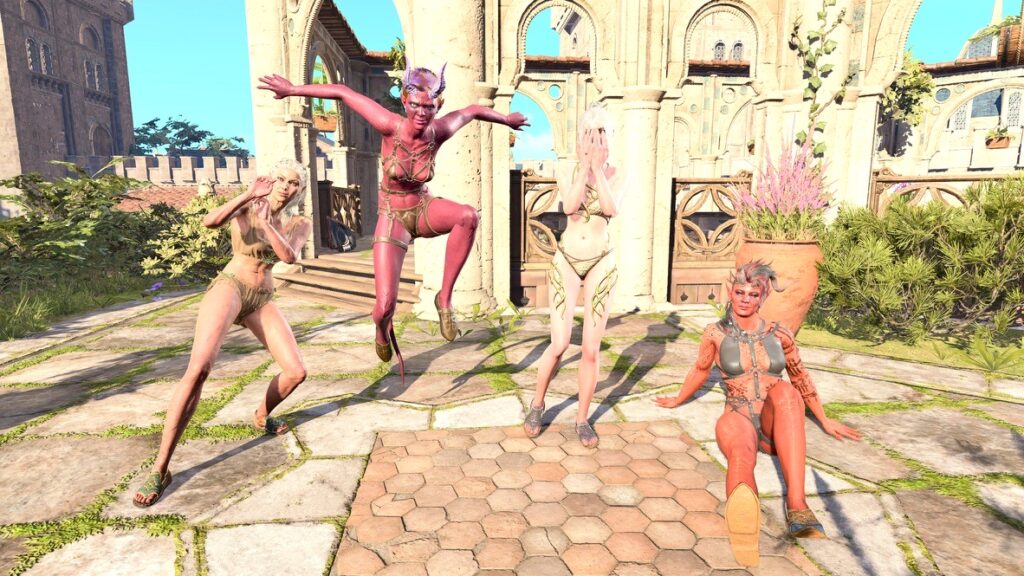
Now that I’ve gotten that foolishness out of my system, I don’t see photo mode replacing the general pool of screenshots I accumulate in each playthrough. For one thing, it takes a while to position the characters, the camera, and so on. When I press SELECT on my controller, it only takes a second. To prepare a photo-mode shot can 10-15 minutes, depending on how much attention I want to put into the shot.
For capturing images for my playthrough write-ups, I can see two uses for photo mode:
-
I can use it to recreate what I think are classic moments but using other characters.
The moment that immediately comes to mind is Minthara’s classic line:
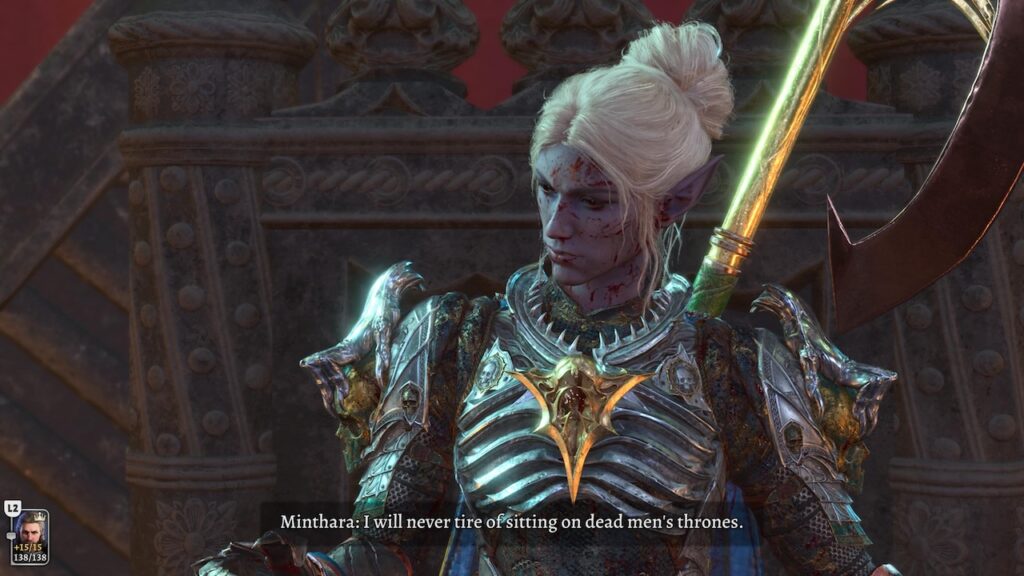
From playthrough 7. Minthara, don’t ever change. In playthrough 11, I followed up on that line with lots of images of characters sitting in thrones.
The problem is that there’s a limit to how you can position the camera with respect to a character’s model. Something like this is the best I can normally do:
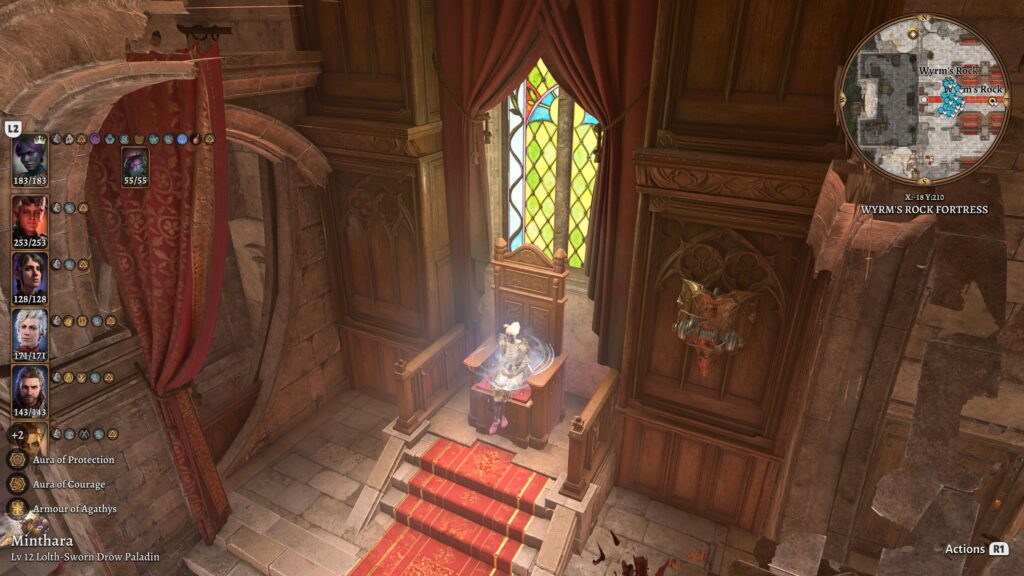
This as close to Minthara as I can get without photo mode. The camera’s position is somehow restricted by the wall behind the throne. (This screenshot, and those that follow, are from a game save I made in playthrough 12.) Until now, my only work-around was to bring in another figure (frequently Scratch) to stand next to the throne. I had some greater flexibility positioning the camera around the secondary character.
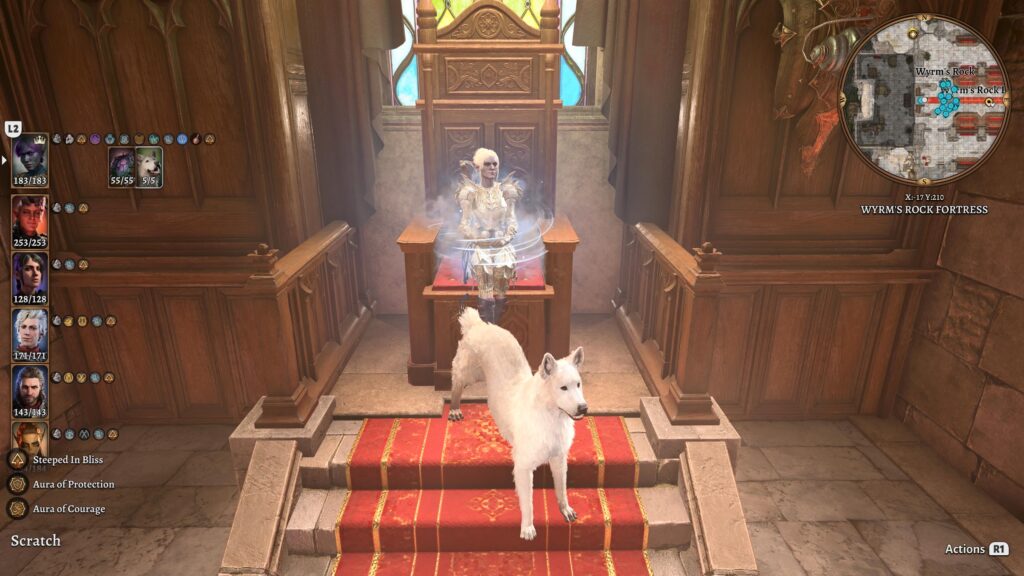
With photo mode, you have complete freedom in positioning the camera.
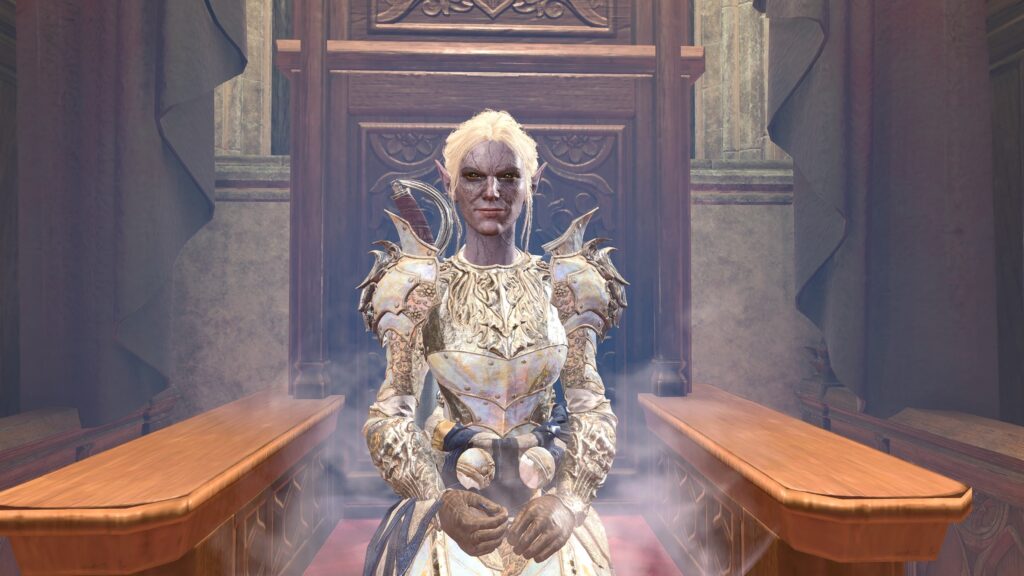
Now we can see Minthara in all her throne-sitting glory, regal and magnificent. 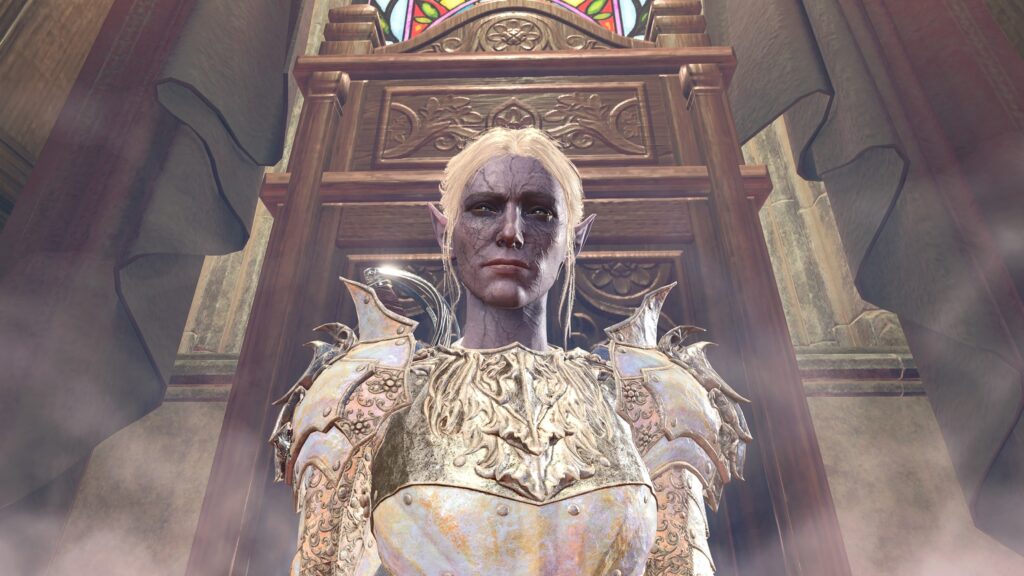
Minthara looks down upon you as if you were a human, or something even worse. 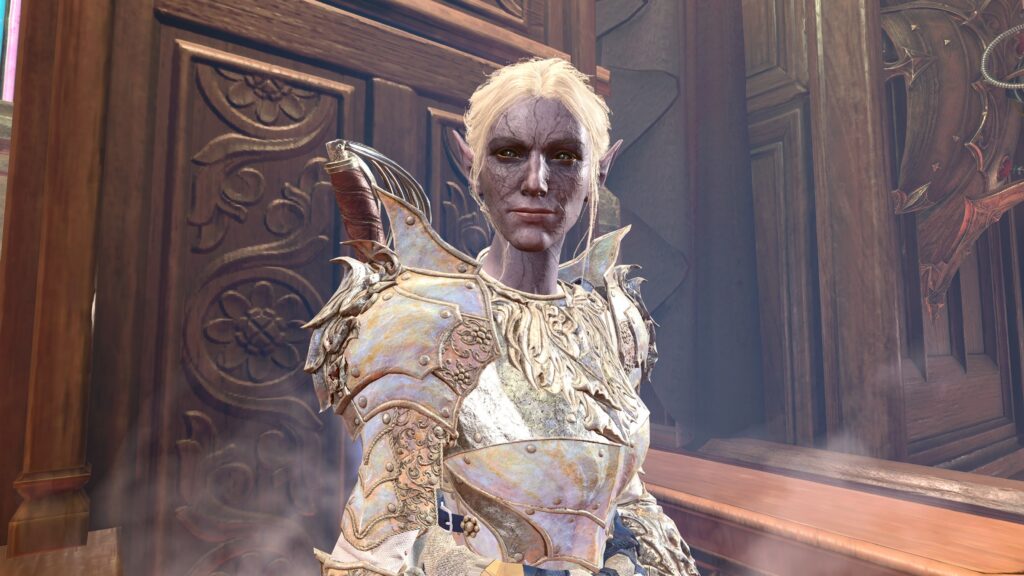
She’ll deign to turn her head and smile at you, as long as you acknowledge her authority. 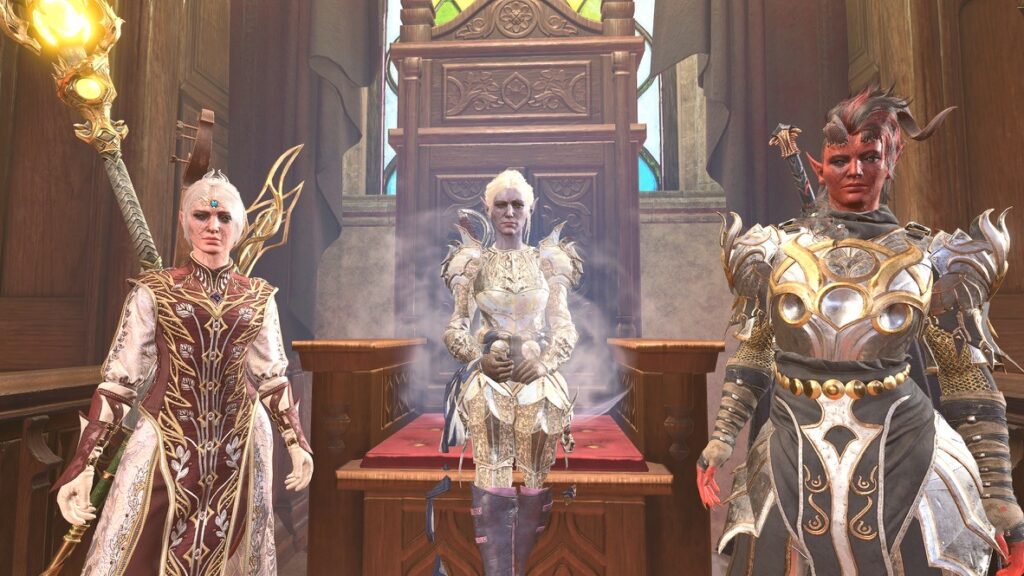
Without photo mode, a shot like is not possible in BG3, at least not without a mod of some sort. 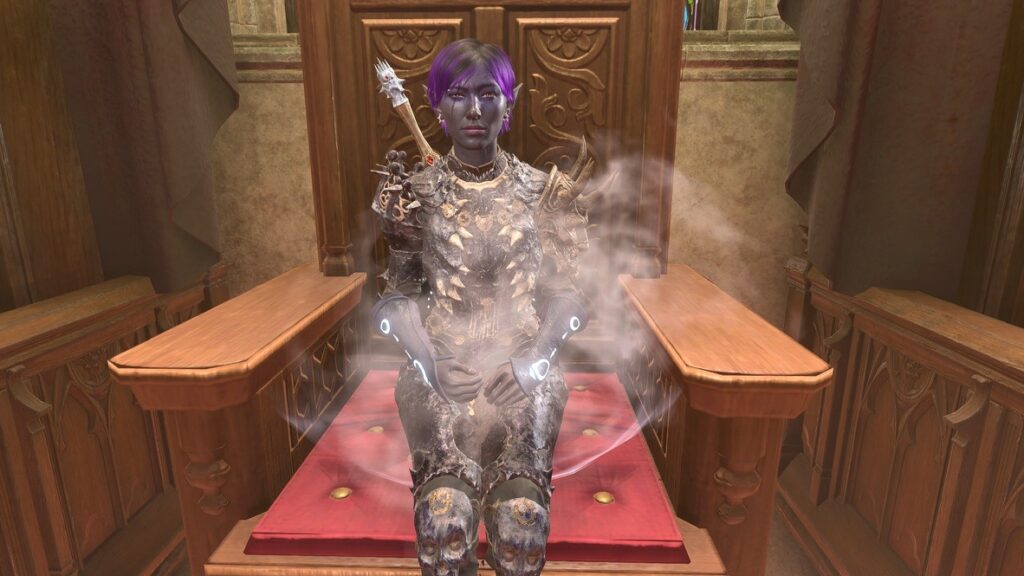
Amaranth was the protagonist of playthrough 12. Surely she also deserves to sit on a throne. 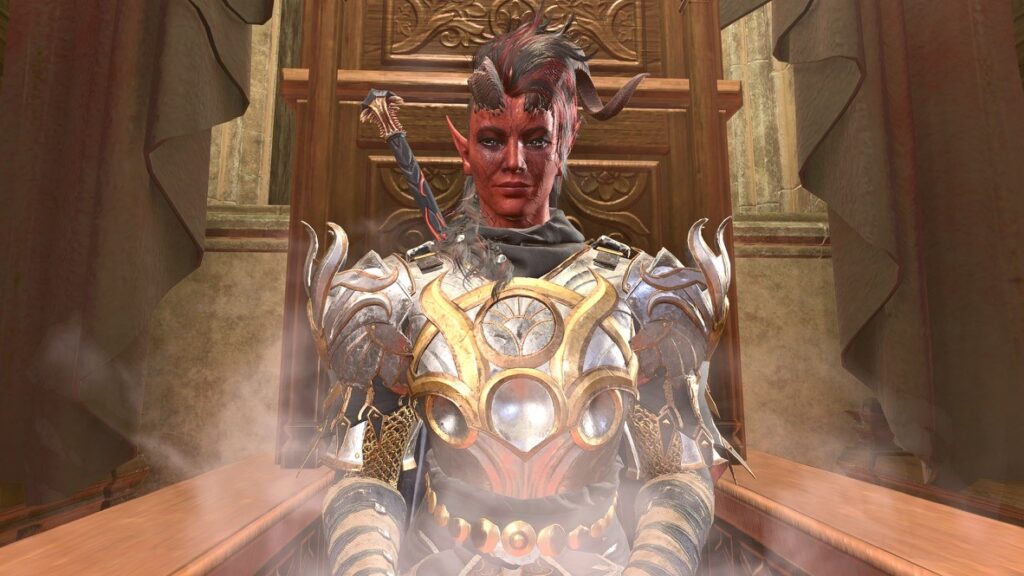
I took more throne-sitting images. However, I’m going to reserve those for my playthough 1/14 write-up, for reasons that will become clear then. -
Screen captures of combat are often busy and ambiguous. While you’re playing the game everything is clear enough, but any given screen capture in a frozen moment of action can be hard to interpret. Here are examples from a playthrough 12 game save.
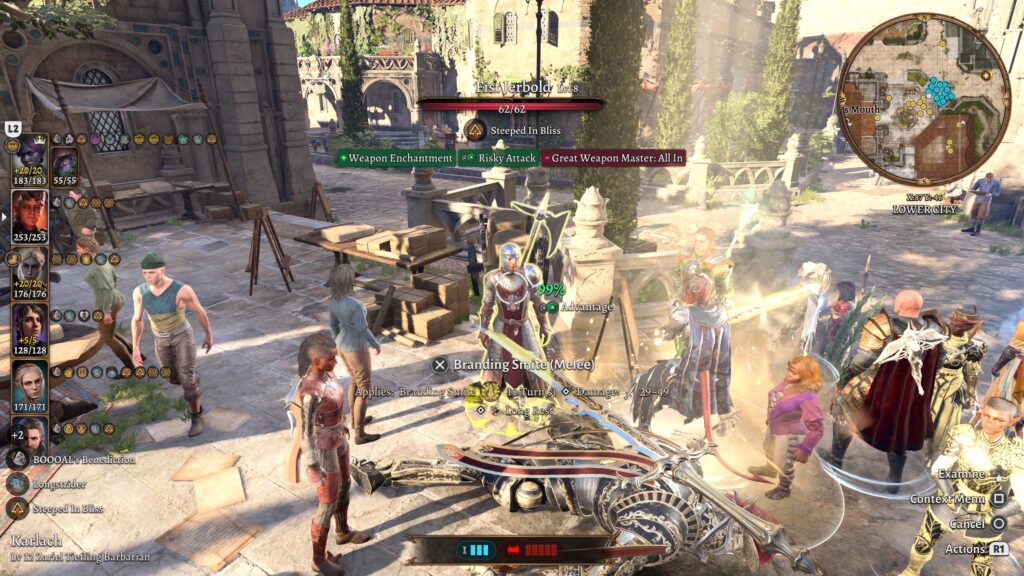
Without photo mode: Fist Jerbold said something rude about your mother. Karlach is not about to let him get away with that. She’s going to hit him with a Branding Smite. 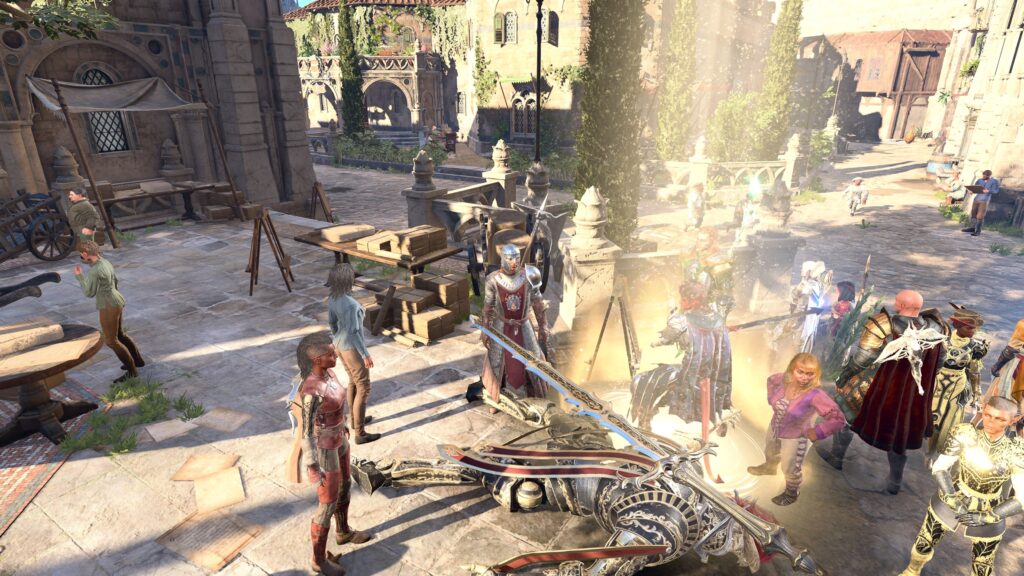
Simply going into photo mode removes the game’s overlays, which makes things a bit less crowded. 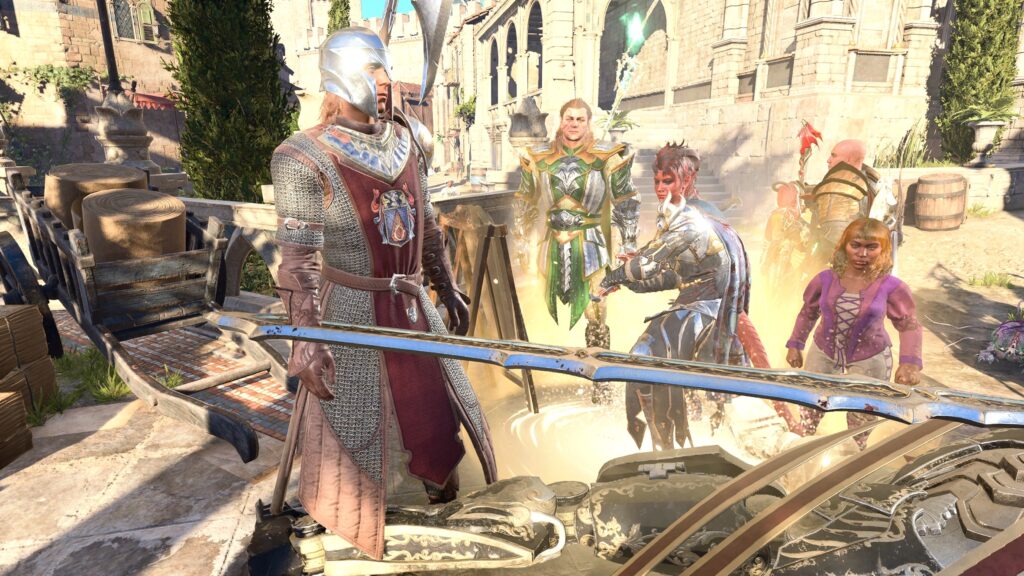
Same scene, with the camera moved around for a more dramatic shot. 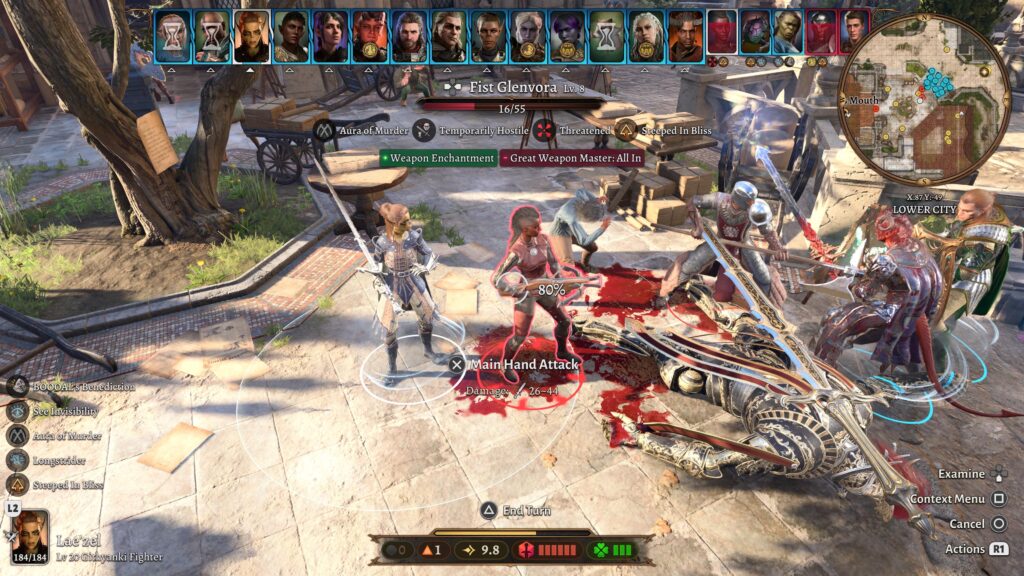
Another example: Fist Glenvora just said something rude about your father. Lae’zel agrees with the insult, but she feels like attacking something anyway. 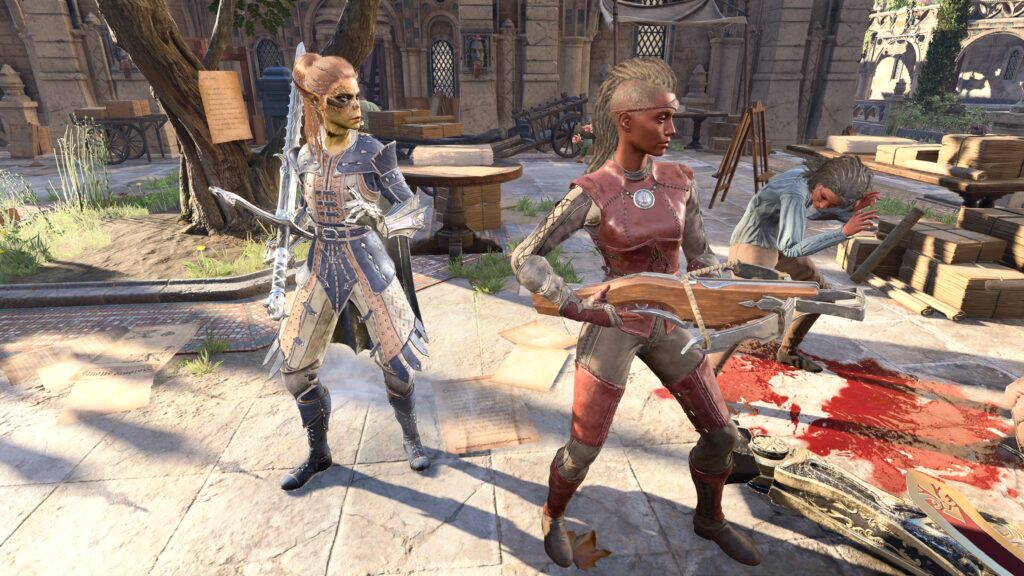
The same scene, but in photo mode and a better camera angle. 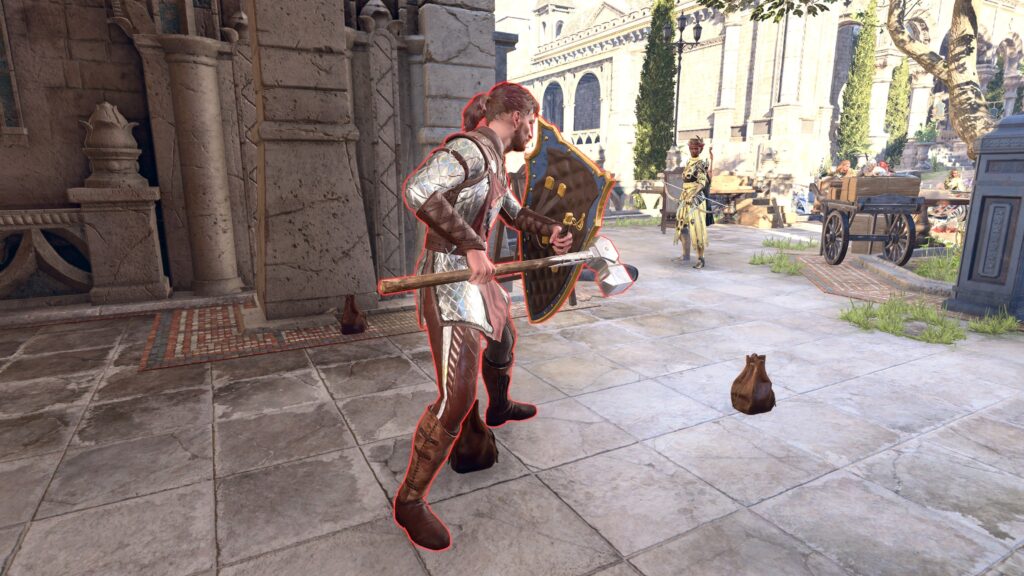
This Flaming Fist thinks he can stand up to Moana the Bard. 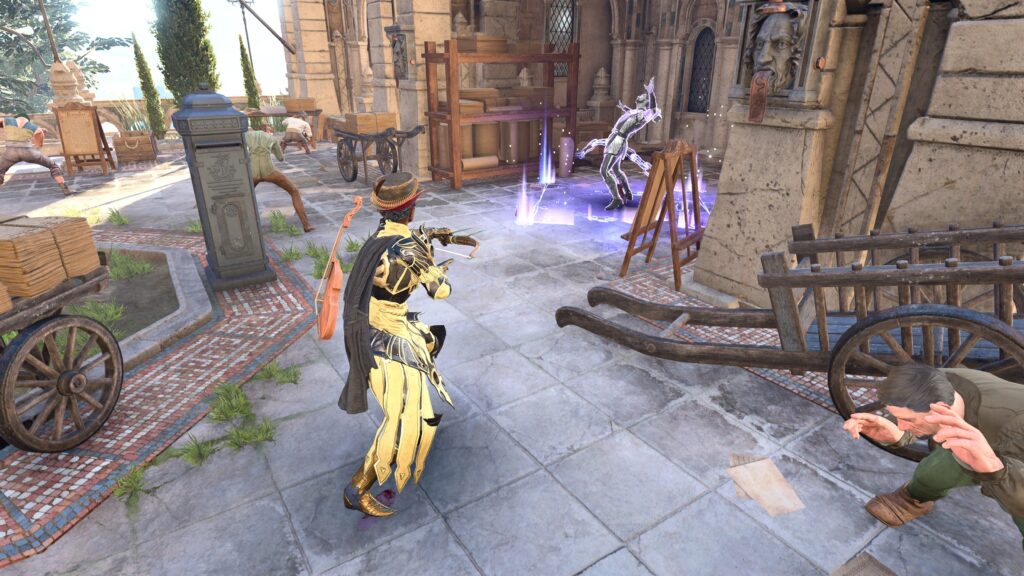
However, Moana knows how to cast Hold Person. 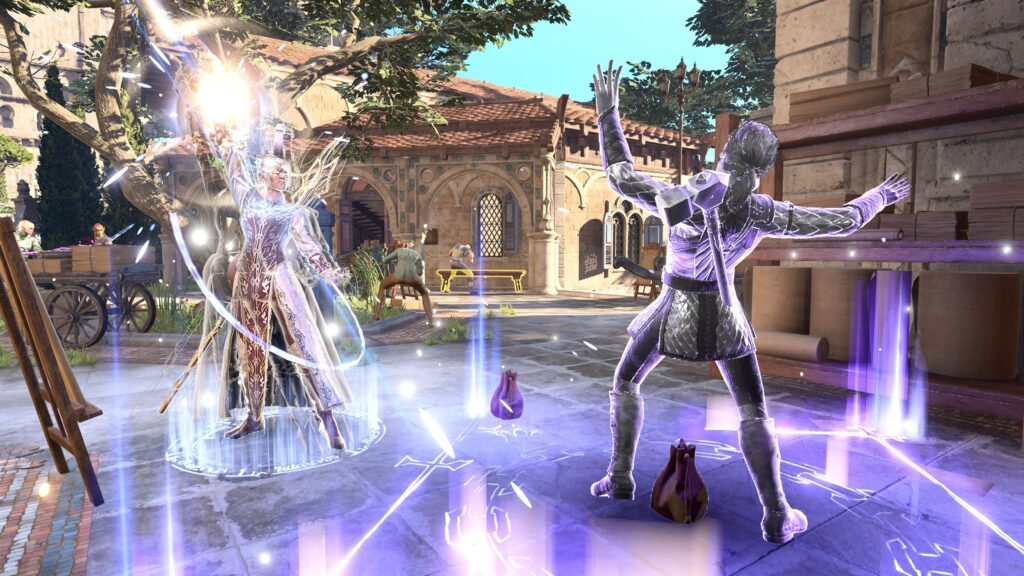
The Fist is unable to move. Shadowheart, shimmering with the effects of her Displacement Cloak, prepares to case a Radiant Flame to finish him off. 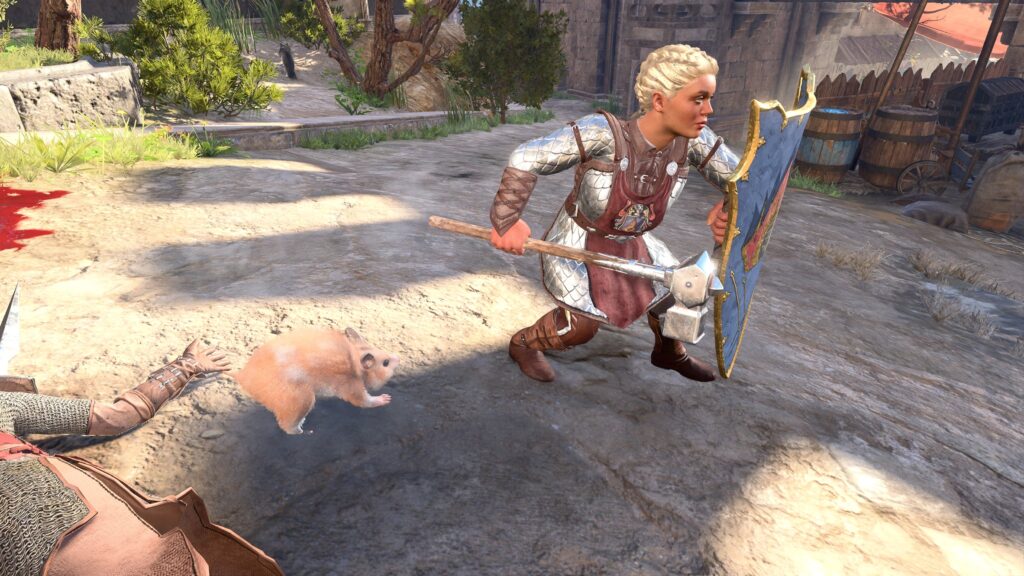
This Flaming Fist has made a critical mistake: She turned her back on Boo. It is the last mistake she will ever make. 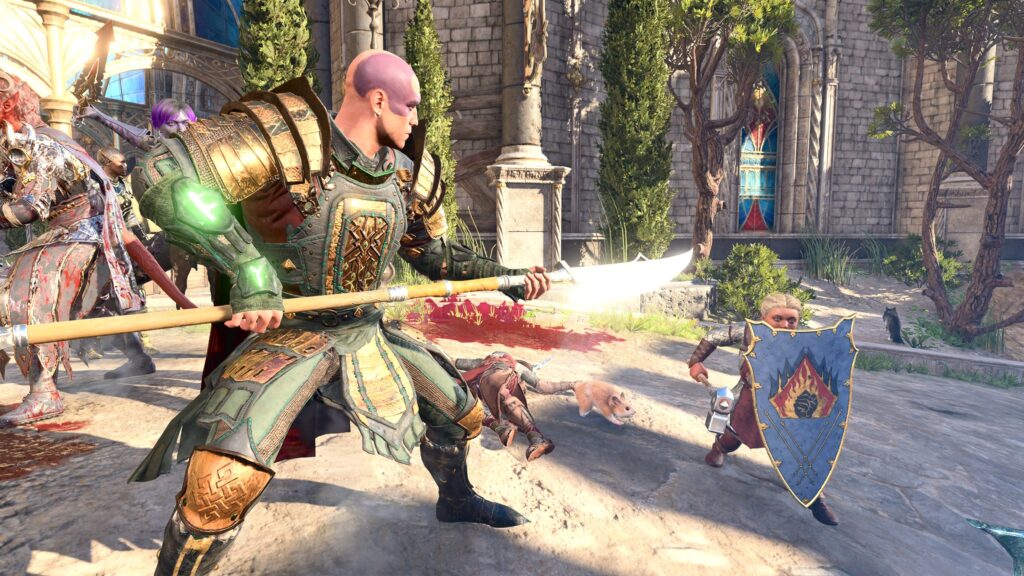
The reason why it was her last mistake is that Minsc followed up Boo’s strike with a sweep of his glaive. 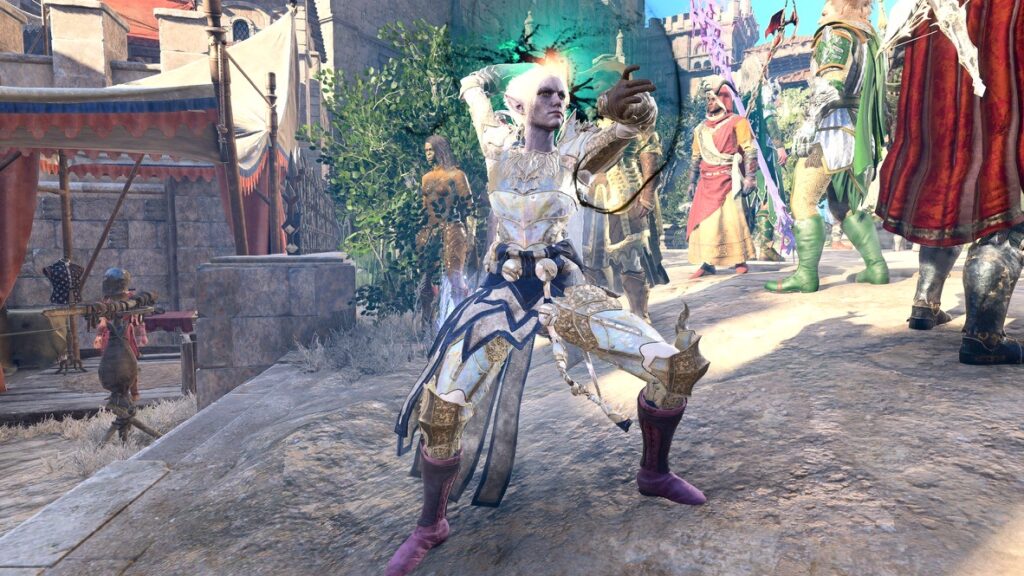
This is Minthara in the middle of casting Eldritch Blast. I did not “pose” her image; this is one of the potential postures of a character model if they cast a spell. For me, this image, and the one with Shadowheart above, are reminders of the efforts of Larian’s motion-capture team as they designed interpretive moves for spell-casting, fighting, and so on. 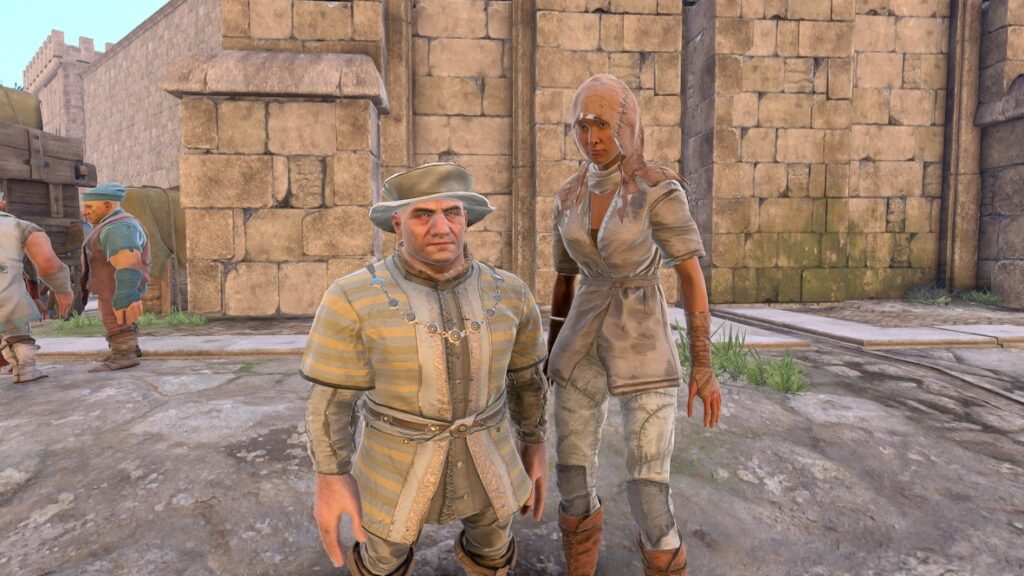
The flexibility of the photo mode’s camera is impressive. These two refugees were standing far off from any combat; that’s why they’re not cringing or running away from the action depicted in the above images. I could still move the camera into position to take this shot. I can’t change their positions or expressions; I can only do that for members of the party. (It also shows BG3’s impressive attention to detail, even on background characters.) 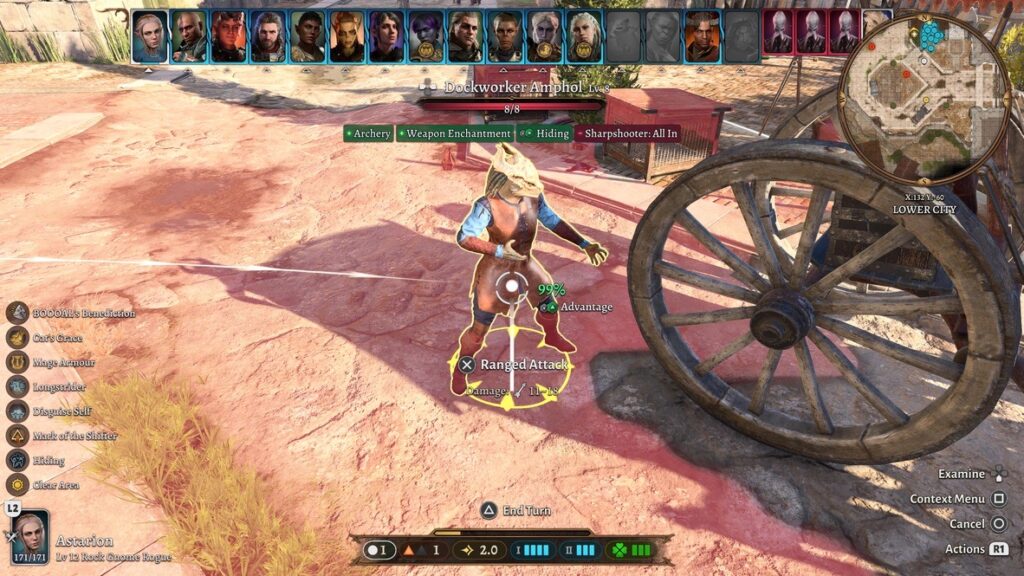
Without photo mode, you can see that someone (certainly not Astarion, I don’t know why you’d think that) is about to attack Dockworker Amphol with a ranged attack. With a 99% chance of success, a damage range of 11-18 hit points, and given that Amphol only has 8 hit points, if he’s going to buy life insurance he should do it right away. 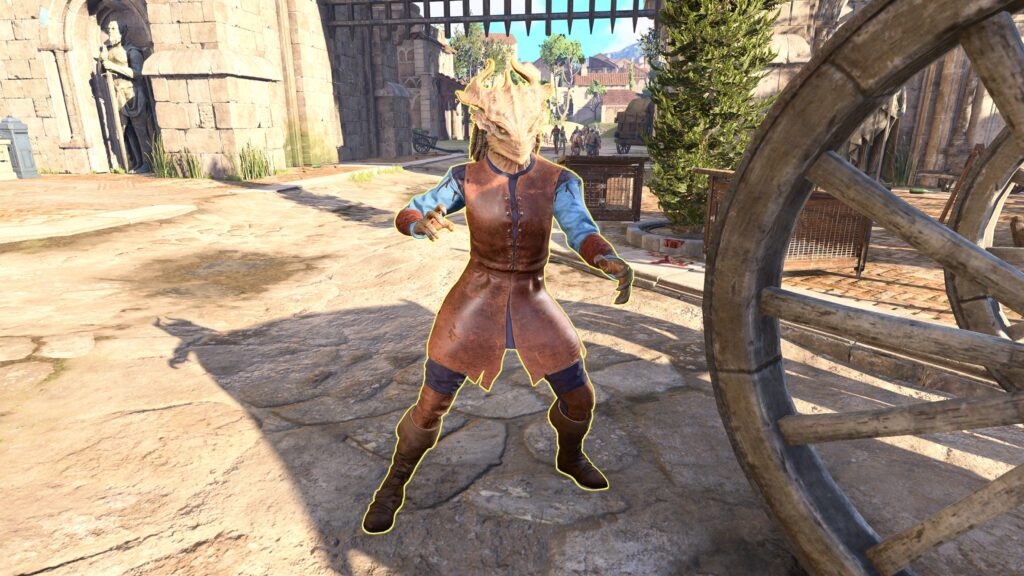
With photo mode, you don’t get the technical details of the attack. But you do get a close-up view of Dockworker Amphol as a person. Perhaps we don’t need to attack him just to make a point about combat screenshots in photo mode. I told this to Astarion, but he ignored me.
A couple of examples of “how the sausage is made”; that is, how much work it can be to set up these photos.
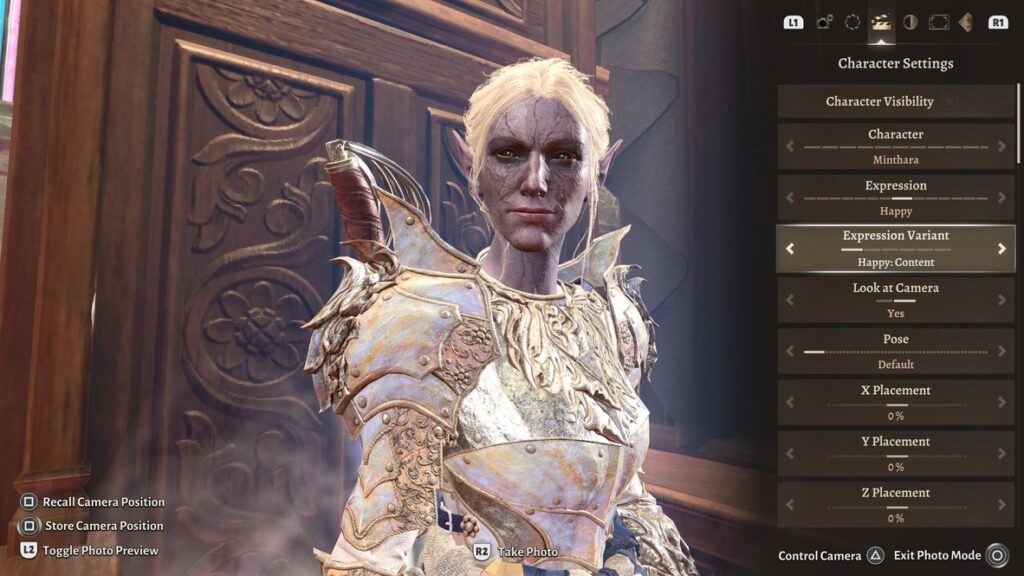
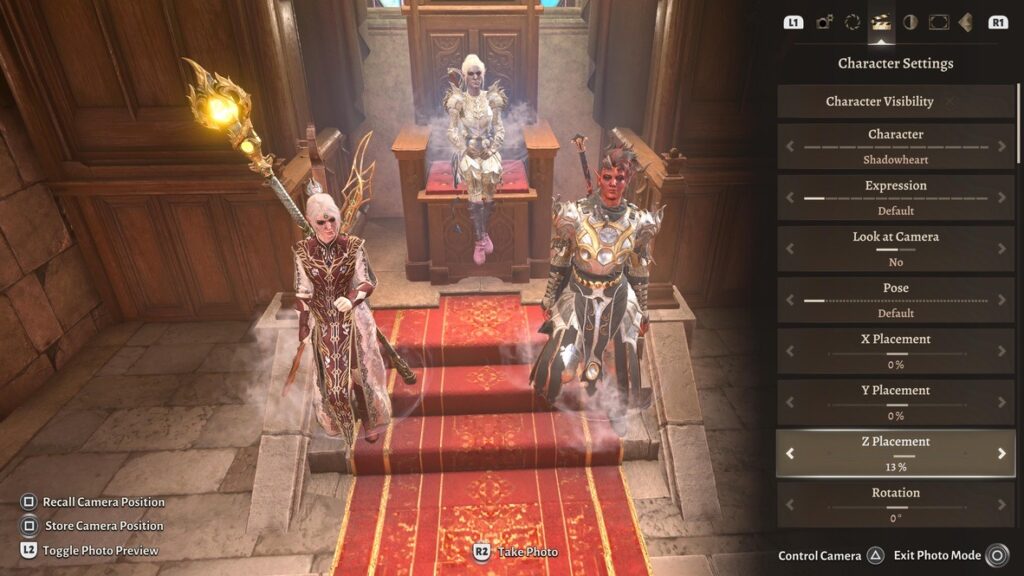
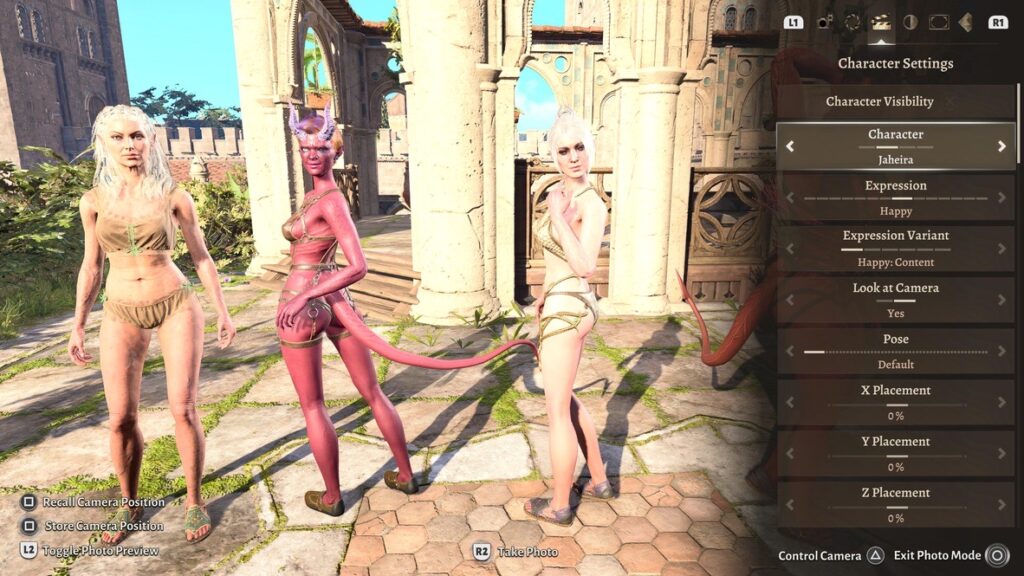
Using photo mode can be time-consuming. Also, if you don’t know anything about photography, the results can be uneven, as you can see in many of the above images.
Still, I’ll probably use it once in a while, if only to make some mildly humorous remark.
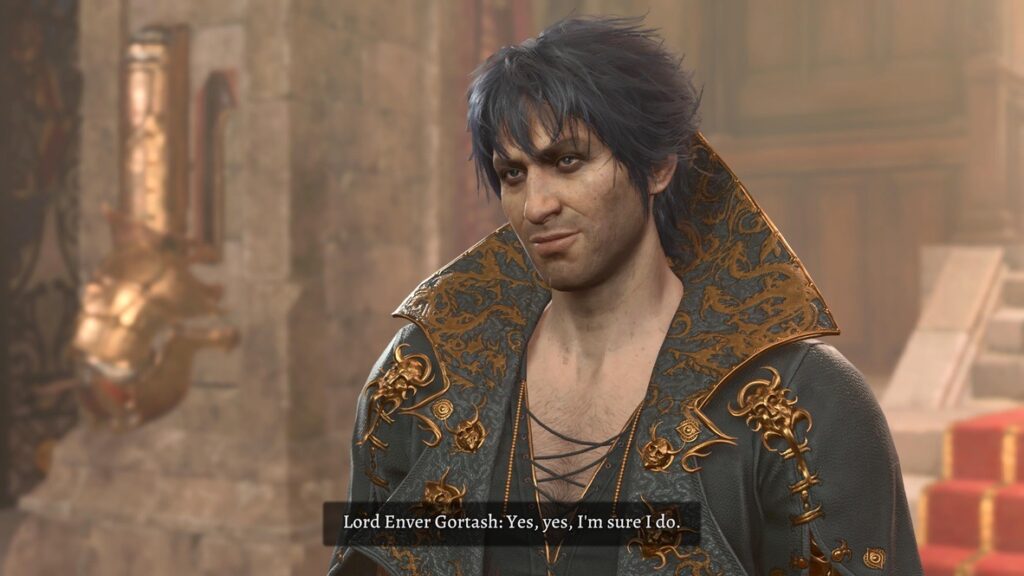
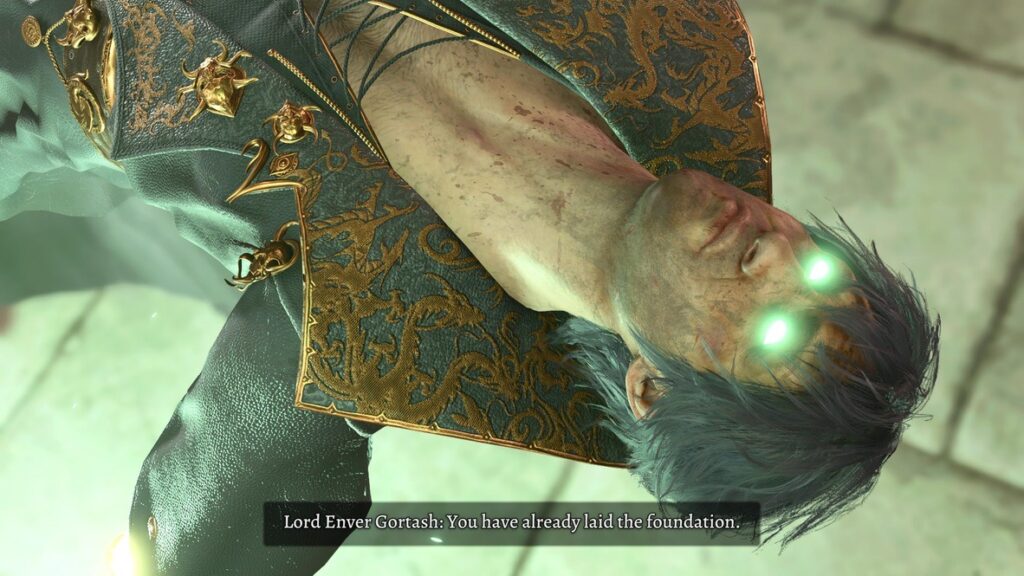
Those last two images were not made with photo mode. You can’t use it while in a cutscene. I’m just pretending to be clever.
Pingback: Baldur’s Gate 3 – Playthrough 1/14 – Fey and Bellandria – The Argothald Journal
Pingback: Baldur’s Gate 3 – Playthrough 1/14 – Hugs and Doggies – The Argothald Journal
Pingback: Preserving BG3 game saves made on PS5 – The Argothald Journal
Pingback: Baldur’s Gate 3 – Playthrough 8’/2.5 – Reality – The Argothald Journal